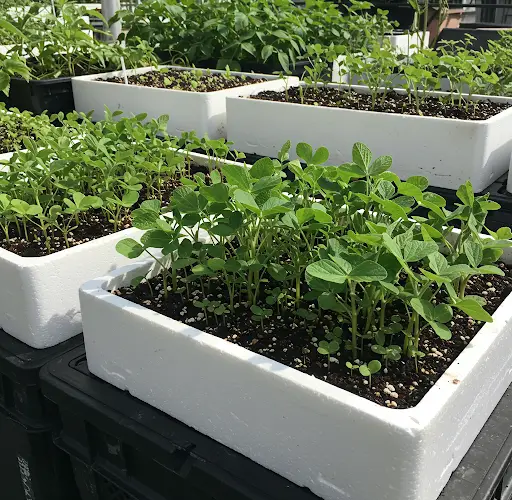Gardening sometimes surprises even the most experienced growers. One such surprise came when an unexpected ingredient—beer—was added to the soybean crop in a home garden. The result? A lush, vigorous patch of vegetables that produced so abundantly, the family didn’t need to buy any greens from the market throughout the entire summer.
At first glance, beer might seem like an unusual addition to the garden. But when used wisely, it can be a nutrient-rich booster for certain plants—especially legumes like soybeans. In this article, we’ll explain why it works, how to apply it properly, and how to replicate this success in your own backyard.
Why Soybeans Are a Smart Crop for Home Gardens
Soybeans are versatile, nutritious, and easy to grow. They’re a great source of plant-based protein and can be used fresh (as edamame), dried, or even sprouted. More importantly, soybeans are legumes, which means they have a natural ability to fix nitrogen in the soil, improving fertility for surrounding plants.
Soybeans grow best in warm, sunny locations and prefer well-draining soil with moderate moisture. With just a bit of care, they can thrive in raised beds, garden plots, or even large containers.
The Secret Ingredient: Why Beer?
It may sound strange, but beer contains several elements beneficial to plant growth:
-
Sugars: Support microbial activity in the soil
-
Yeast: Helps break down organic matter, making nutrients more available
-
Trace minerals: Found in small amounts in many commercial beers
-
B vitamins: Can stimulate plant resilience and growth
When diluted properly, beer can act as a mild growth stimulant for both the plant and the beneficial organisms in the soil. For soybeans, which already enrich the soil with nitrogen, this extra boost can result in larger plants, more pods, and faster growth.
How to Use Beer in the Garden: Step-by-Step Method
1. Choose the Right Beer
Avoid dark or flavored beers. Go with light, inexpensive lagers—these contain the sugars and yeast needed without overwhelming the soil. Make sure the beer is fresh (not expired or flat).
2. Dilute Properly
Do not pour full-strength beer directly onto your plants. This can cause mold or damage. Instead, mix 1 part beer to 10 parts water. This dilution is strong enough to provide benefits without harming soil balance.
3. When to Apply
The best time to apply the beer solution is during early morning or late afternoon, when temperatures are cooler. Avoid spraying during midday sun, which can cause the liquid to evaporate too quickly.
Apply the mixture once every 10 to 14 days. Pour it gently around the base of the soybean plants, soaking the soil near the roots. Avoid wetting the leaves to prevent fungal problems.
What Happened After Beer Was Added
Within a few weeks of using this method, the soybean plants began growing more vigorously. Leaves became broader and greener, and flowering occurred earlier than expected. Soon, pods began to form—and not just a few.
Because soybeans mature quickly and produce heavily when cared for properly, the garden soon turned into a sea of edible green pods. The plants were strong, healthy, and continued producing for several weeks longer than usual.
The family began harvesting more than enough for their daily meals. In fact, the surplus was enough to share with neighbors—and the garden kept giving throughout the summer.
Tips for Growing High-Yield Soybeans at Home
If you’d like to recreate this success, here are a few practical tips:
-
Choose early-maturing varieties for a quicker harvest.
-
Soak seeds overnight before planting to boost germination.
-
Plant in full sun—at least 6–8 hours of sunlight daily.
-
Space the plants properly (around 3–4 inches apart) to reduce competition.
-
Mulch around the base to retain moisture and reduce weeds.
-
Use the beer-water solution regularly through the growing season.
Combine these practices with regular weeding and attentive care, and you’ll enjoy a robust crop in just a few months.
Other Plants That Benefit from Beer
While soybeans responded exceptionally well, you can also experiment with using beer water on:
-
Leafy greens (like spinach and lettuce)
-
Cucumbers
-
Tomatoes (use sparingly)
-
Root vegetables like radishes and carrots
Just remember: moderation and proper dilution are key.
Final Thoughts
Who knew that a splash of beer could transform a simple soybean patch into a thriving, high-yield garden? This unconventional tip proved that sometimes nature responds best to simple, unexpected solutions.
By applying diluted beer to soybeans and maintaining basic gardening practices, one home garden became so productive that there was no need to buy vegetables all summer long. It’s an easy, affordable experiment you can try in your own garden—with results that just might surprise you.



